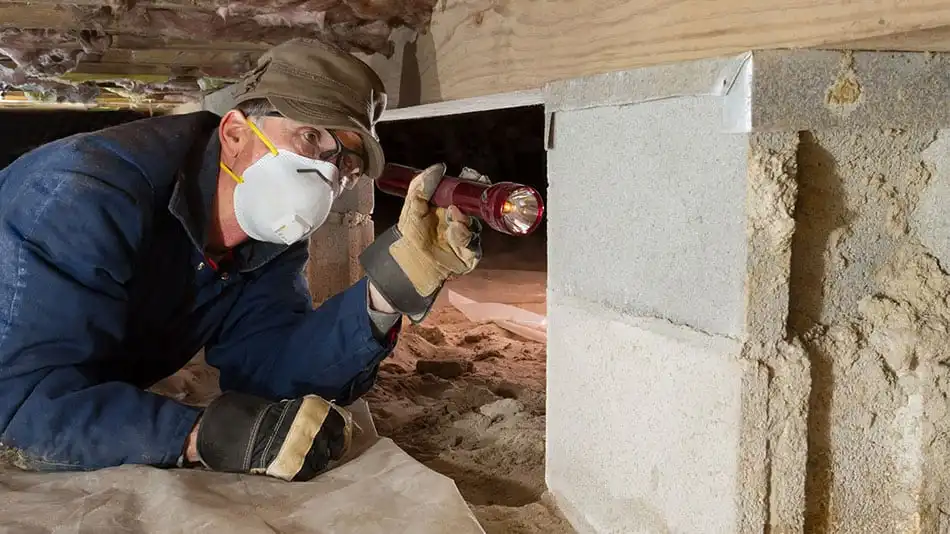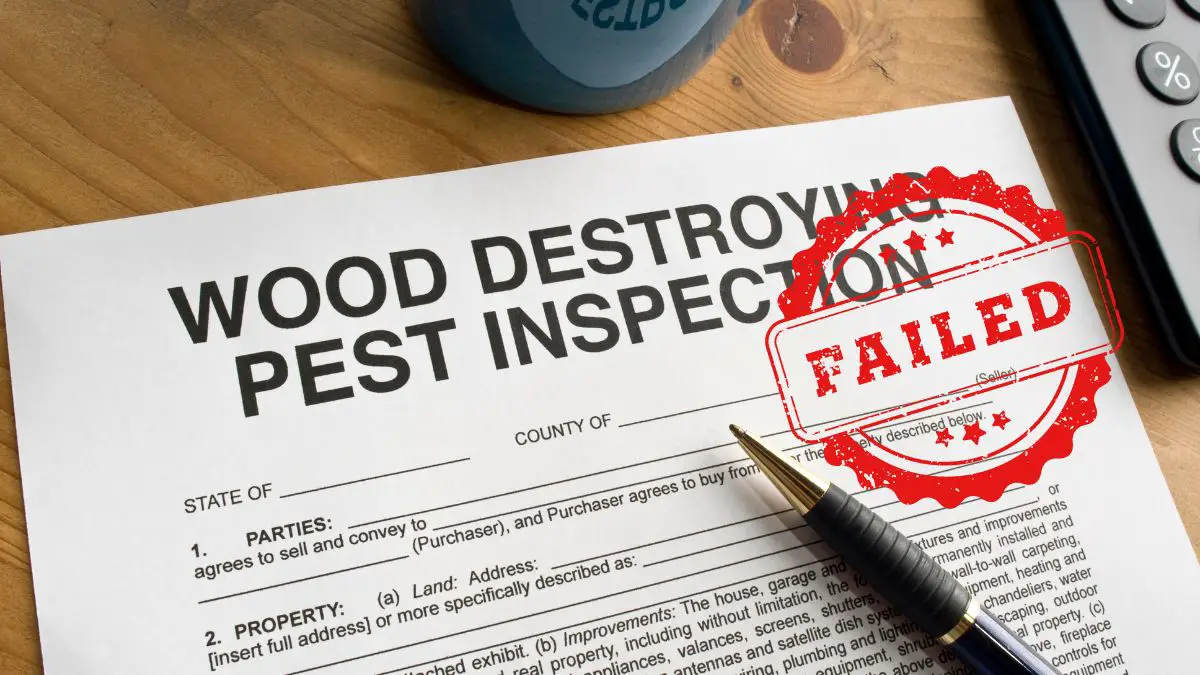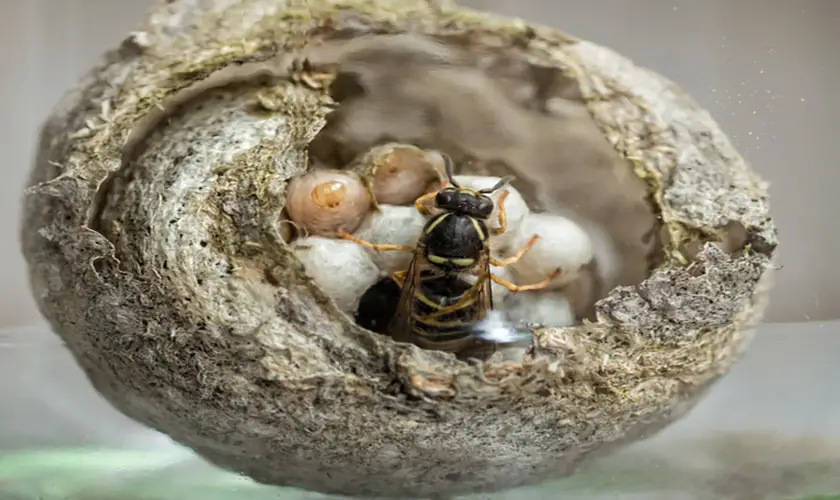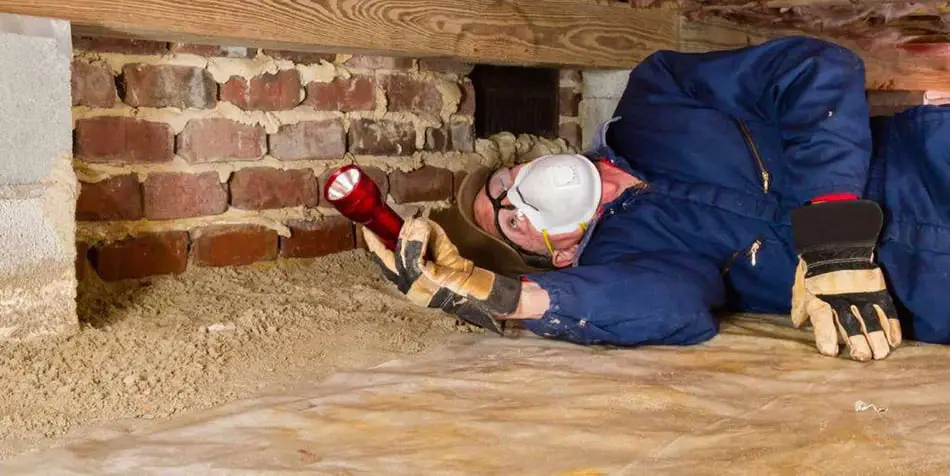
If you have ever been stung by a wasp, it is not a sensation you are likely to forget. The searing, eye-watering pain embeds itself in your mind, causing you to make haste to get away from wasps you might encounter in the future.
Unfortunately, wasps often choose to make their nests around houses, resulting in frequent human-wasp interactions. The people are generally the losers!
Wasps have no compunction in applying their stingers to any part of the human anatomy with voracity. Many different approaches have been tried to deter wasps, and one of the popular ones is using mothballs.
Wasps detect the smell of mothballs through scent receptors on their antennae. Mothballs have a strong smell that wasps find offensive. As a result, the wasps do not build their nests near mothballs. In a small enclosed area, the toxic gases given off by mothballs will kill wasps.
Get FREE quotes from licensed pest control technicians in your area today. Whether you need spraying for ants, roaches, spiders, ticks, mosquitos, or bed bugs, We Can Help! All technicians are screened, licensed, and insured.
Most people have dealt with being stung by a wasp before. Wasps can become a nuisance around homes where residents keep ducking and diving due to their unsocial behavior.
There are many ways to deter or kill wasps. One of the traditional and long-used methods has been positioning mothballs around areas where wasps may try to nest.
This article will examine why mothballs deter wasps, what mothballs are made of, and how to use them. There will also be information on the safety of mothballs and possible complications of using mothballs around the home.
We will also present alternative solutions to deterring and killing wasps. A discussion on the role of wasps in the ecosystem will allow readers to evaluate whether we should kill wasps or if using a deterrent is a better choice.
What Are Mothballs?
Mothballs are made of naphthalene or paradichlorobenzene. Naphthalene was first identified and created by a chemist named John Kidd in 1821. It is produced from coal tar or crude oil. It was first registered as a pesticide in 1948 in the United States. Naphthalene is a solid which changes state and becomes a toxic gas. The gas kills insects, and it repels some animals.
Paradichlorobenzene is similar to naphthalene and also emits toxic gases. It was registered as a pesticide in 1942 in the United States. Paradichlorobenzene is less toxic and less flammable than naphthalene. As a result, most mothballs In the United States are made from paradichlorobenzene.
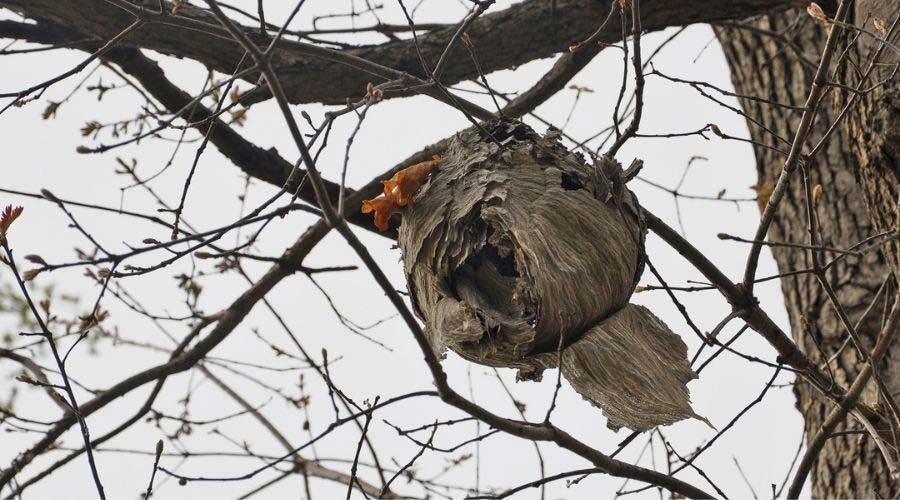
Wasps Build Nests
Many species of wasps are social insects, meaning they live in a community. Some wasp species are solitary.
The community of wasps or the individual wasp builds a nest that they use to reproduce more wasps. The nest is shaped like an upside-down cup with tiny, open-ended tubules.
Wasps hang on the nest by the open side of the tubules, tending to the nest made from wood fibers or mud. The wasps combine these materials with their saliva to form nests.
The eggs are laid in the tubules and hatch into larvae. The wasps feed the larvae and keep the nest clean, making repairs when necessary. They guard the nest against predators to ensure the survival of their young.
Where Do Wasps Build Their Nests?
Wasps look for areas that are well sheltered to build their nests. This means that roof overhangs, porches, attics, chimneys, or fireplaces are good spots for wasps to build nests.
Unfortunately, this results in wasps commonly coming into contact with people. As mentioned earlier, wasps guard their nests and attack potential predators. Wasps are irritable and inclined to attack during spring and summer.
The studies say that wasps only attack when they feel threatened, but many people who have been attacked when innocently walking past a nest might make a case for wasps to be diagnosed with paranoia.
Male wasps never sting and do not have a stinger at all. Female wasps guard the nest and attack in large numbers, often pursuing the potential threat over a long distance.
Wasps are capable of repeatedly stinging as they do not die after stinging in the same way that bees do. Wasp stings contain venom that is formulated to deliver maximum pain.
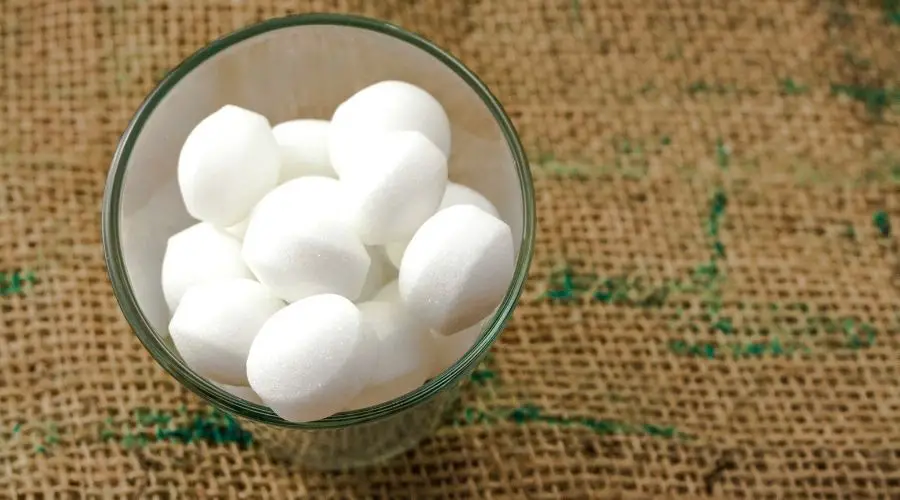
Why Do Mothballs Repel Or Kill Wasps?
The toxic fumes from mothballs discourage wasps from building their nests in the area of mothball placement.
Mothballs hung in the open air will repel wasps and is unlikely to kill them. If the wasps are in a small, confined space, the placement of mothballs may kill the wasps.
How Do Wasps Smell Mothballs?
Wasps have receptor neurons on their antennae that are adapted to detecting differing smells. These receptor neurons are susceptible, and studies have shown that wasp scent detection can be better than dogs.
The odor of mothballs is very pungent. With their sensitive scent detection, for wasps, this odor is repugnant enough to send them on their way.
How To Use Mothballs To Repel Wasps?
You can place a few mothballs in a porous fabric bag or piece of cloth, which is then tied together and hung up along places where the wasps like to make their nests. This should deter the wasps from making that their place of residence.
If you already have a nest, you could place a mothball package near the nest, but the chances are that you will be stung and may not get to hang up your mothball repellent because of the pain of the stings.
Where Should Mothballs Not Be Used?
Mothballs should not be hung in an attic or covered porch where the fumes permeate the house. If you can smell the mothballs in your home, you need to remove them and use an alternative method to deter the wasps.

Are Mothballs Dangerous For People And Pets?
Naphthalene and paradichlorobenzene break down into different compounds in human and animal bodies. Exposure to the chemicals is through inhalation of the gas, absorption through the skin, or accidental ingestion.
In humans, symptoms of exposure include headaches, nausea, fatigue, and dizziness. Irritation of the skin, nasal passages, and eyes may also be seen.
Hemolytic anemia (when the red blood cells are damaged) and kidney and liver damage may occur. Small children will have more severe symptoms, mainly if they ingest it.
Observing tremors, seizures, and labored breathing in small children would be best. Naphthalene is more toxic than paradichlorobenzene.
Dogs and cats will vomit, have tremors, seizures, difficulty breathing, lethargy, and be disinclined to eat. A clinical examination may show hemolytic anemia, which will be seen as pale or brownish-colored gums. Liver and kidney damage may occur.
Cats are more susceptible to the toxicity of mothballs but are unlikely to eat them. Dogs more commonly eat mothballs. Your pet birds can suffer severe symptoms from inhaling the fumes from mothballs.
If they are exposed to the fumes for long periods, they may die. Ducks or chickens that consume mothballs will die rapidly.
Mothball Poisoning
Any person or pet showing symptoms of mothball toxicity or ingested a mothball should immediately be taken for medical or veterinary help.
Mothballs break down slowly after being eaten, so symptoms may not appear for a few days. Contact your doctor or veterinarian before inducing vomiting in the person or pet.
Precautions In Using Mothballs To Deter Wasps
- Always wash your hands well after handling mothballs, and preferably use disposable gloves to handle the mothballs.
- Do not place mothballs in an area where the fumes enter the house and constantly expose the occupants to the fumes. This includes attics, cars, crawl spaces, closets, and garden refuse bins. Using mothballs in this manner is illegal in some states of the United States.
These states regulate that mothballs may only be placed in securely sealed containers that are stored out of reach of children and pets. - If you have pets, do not use mothballs in an area where the pets may accidentally access them. Even mothballs hung from eaves may be blown off during bad weather and may be eaten by pets or small children.
- Remove mothballs if you have any symptoms of mothball poisoning.
- Mothballs that can get wet will contaminate plants, soil, and groundwater. Mothballs should therefore never be placed in an area where they might be exposed to rain.
Mothballs Are Flammable
Many people will use mothballs in their attics or crawl spaces, which poses a genuine fire risk. Naphthalene and paradichlorobenzene are flammable, although naphthalene is the more flammable of the two.
Naphthalene is considered combustible when in solid form, and it is in a gaseous state and is highly burnable.
Attics and crawl spaces are notoriously hot, so placing mothballs in these spaces could easily result in a fire. The heat will cause an increase in gases from the mothballs.
If a fire should result from a mothball, it is unlikely that the insurance company would pay. The instructions on the mothball packaging state that we should only use them in certain conditions, which does not include attics and crawl spaces.
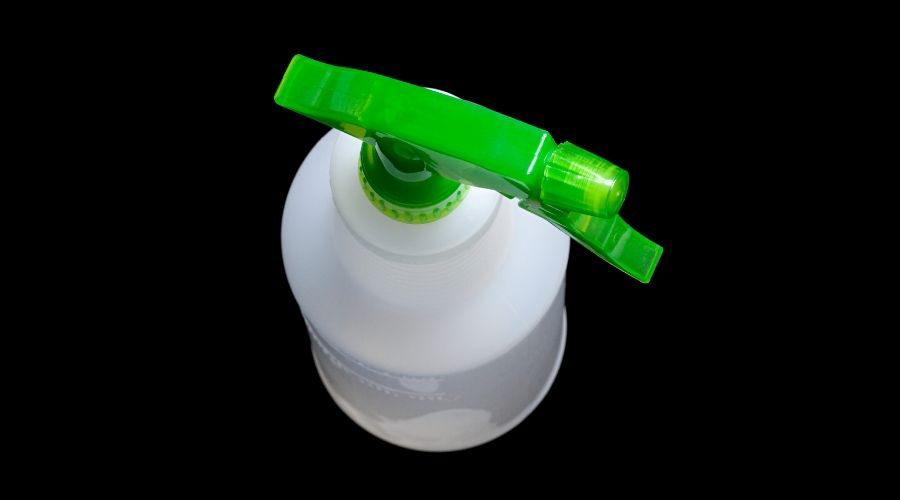
Alternative Wasp Deterrents
There are alternatives to mothballs that are safer. Probably the safest option is an artificial wasp nest or an old abandoned wasp nest. Wasps are territorial insects and will avoid building their nests where they have competition from other wasps.
Unfortunately, you may need many artificial wasp nests depending on the size of the area you need to protect or the species trying to nest by your home. Different wasp species have other size territories.
Wasp traps may be purchased or made from discarded plastic bottles. A narrow funnel leads the wasps into the trap. The wasps are lured into the trap by a sweet-smelling, brightly colored liquid. Once in the trap, the wasps drown.
Some claim that mixing garlic with water and spraying this in the area will deter wasps.
Shiny objects hung from the roof or eaves will help to deter wasps. One of these methods is hanging pieces of tin foil or wrapping tin foil around the beams. Some people claim that the coin in a bag method works.
Place a coin in a transparent bag, and then fill the bag with water. The light reflects off the coin through the water creating diverse light rays that deter the wasps. Others have used redundant compact discs to create light-reflecting moving discs to deter wasps.
This can prevent unwanted birds from making nests in the eaves.
Burning coffee powder is said to deter wasps as the odor and smoke will repel them. This may be true, but constantly burning the coffee would be costly and a fire hazard. It may be beneficial to roast the coffee if you spot wasps starting to build a nest.
Other Tips To Limit Wasps
- If you have a garden with fruit trees, pick up any fallen fruit. Wasps are attracted to the sweet smell of decaying fruit. So eliminating that will limit the attractions of your garden.
- Repair any broken or leaking water pipes. Wasps often make nests near a source of water.
- Do not leave pet food outside. Allow your pet to eat and then pick up the bowl.
- Seal garbage bins tightly.
- Clean well after a barbecue, so no meat scraps are left around. In spring and summer, wasps are attracted to proteins.
- Do not leave cold drink bottles in places where wasps may have access to them.
- Some plants repel wasps. Try planting chrysanthemums, spearmint, garlic, eucalyptus, spring onions, thyme, peppermint, citronella, or wormwood around areas where you want to deter wasps.
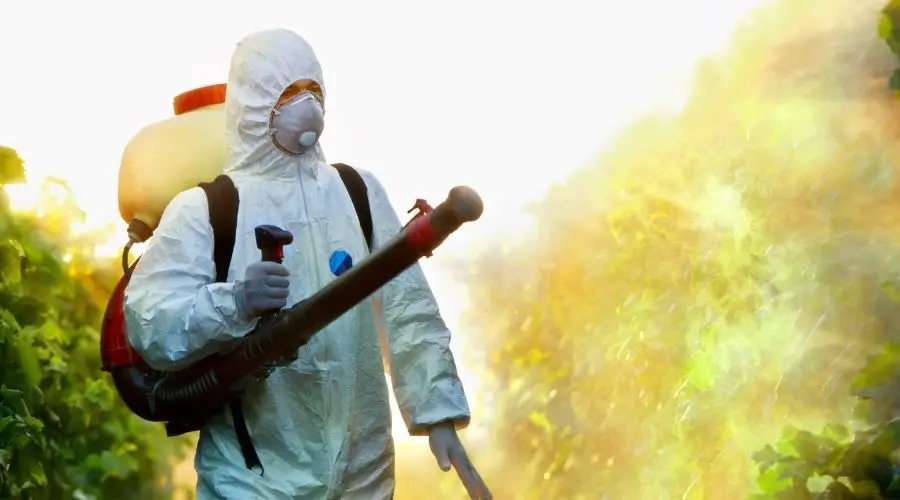
What Methods Can Be Used If You Have A Wasp Nest?
You might notice the wasp nest for the first time when you walk out of your house and are stung by a wasp. Wasps build their nests in a surprisingly short amount of time. It is wise to remove the nest when wasps are located in an area where they continually attack people or pets.
Some people have allergic reactions to the histamines in wasp stings and can have life-threatening reactions to them. Wasp stings are excruciating, and the effect of the sting can sometimes last for days.
1. Insecticides To Kill Wasps
Several manufacturers have produced insecticides that you may spray from a distance. It would be a sensible precaution to wear thick clothing, gloves, a hat, and face-covering just in case the spray does not knock the wasps down immediately.
Many of these insecticides will contain permethrin or pyrethroids. Doug Mahoney writing for the New York Times, rated various sprays to kill wasps and determined the four most effective mists.
He decided the four most effective sprays to are:
- Terro Wasp And Hornet Killer: this spray contains two different pyrethroids. The pyrethroids are delivered in a thick foam that quickly encompasses the wasp nest, preventing angry wasps from flying to attack you. The spray can be delivered from fifteen feet away and has a low odor.
- Ortho Home Defence Hornet & Wasp Killer 7: This insecticide is similar to the Terro spray but comes in a smaller can and has a less secure cap. The lack of a securely fitting lid might be potentially hazardous if the spray falls into the hands of a child.
- Bonide Wasp, Hornet & Yellow Jacket Killer: This spray has a longer distance than the above two sprays. The problem is that it comes in a small can and has an insecure cap.
The small amount of spray may be a problem when spraying a large nest as you do not want to run out of insecticide spray in the middle of your campaign against the wasps. - Bayer Delta Dust Insecticide: This insecticide is powder in a squeeze bottle to allow ease of administration. It is specially formulated to eliminate wasps that nest in walls or the ground.
The poison is slow acting to reach all areas of the nest. Sprays cannot penetrate the entire nest in the ground or wall. This powder is deposited at the entrance.
As the wasps enter the nest, they take the insecticide with them, allowing the entire colony to reach. The powder has the added benefit of being waterproof and continues to be active for up to eight months.
2. Diesel To Kill Wasps
As odd as it sounds, wasps are incredibly attracted to the smell of diesel. If you put a container of diesel near the nest, it will attract the wasps. They will die from drowning in the diesel, or the diesel will poison them if they drink it.
3. High-Pressure Hoses To Knock Down Wasp Nests
A high-pressure power hose you can use from a distance effectively destroys the nest. You will be left dodging the angry adult wasps, so protective clothing will be a good idea. This method is eco-friendly and allows the wasps to live.
4. Wasp Nests In The Ground
If you have wasps that have made a nest in the ground, pour hot soapy water, paint, or oil into the hole where the nest has been built. Alternatively, avoid that area. Once the wasps have gone during the winter, dig up that section and plant wasp deterring plants or put ground garlic into the ground.
5. Removing A Wasp Nest Using A Bag
Some brave souls recommend covering the wasp nest with a plastic bag, pulling the nest off, and sealing the bag. They then either spray insecticide in the bag or freeze the bag to kill the wasps. This method is only recommended for people with high pain thresholds and a devil-may-care attitude.

When Should I Remove Wasp Nests?
Whenever you deal with a wasp nest, it is best to wait until the sun has set or is setting. The cool and darkness make the wasps less prone to attack. Ideally, it is preferable to remove the nest before the queen starts laying eggs.
Once the eggs are laid and hatch into the larvae, the wasps become much more aggressive. This period is usually in late spring and summer.
Late fall and winter are the safest times to remove the nests, but this may be too late if the wasps have become a nuisance and are stinging everyone.
Should We Avoid Killing Wasps?
Wasps are beneficial insects for a few different reasons. Wasps are apex predators in the insectoid world. They kill many spiders, caterpillars, flies, and other insects and, by so doing, maintain the balance of the ecosystem.
Wasps are opportunistic hunters and do not have specialized diets. They will eat whatever insectoid they come across. Some farmers import wasps into an area to control troublesome insects devouring crops.
If you are arachnophobic, wasps may well be your best friend. Wasps are well known for controlling spider populations, even deadly spiders such as the black widow.
Wasps paralyze the spiders and lay their eggs in the spiders. Once the larvae hatch, they eat the spider from the inside out.
Wasps are drawn to sweet nectar and, by so doing, are essential pollinators. Bees are much more selective in the flowers that attract them. Wasps will enter any flower and thus become important in the propagation of plants.
Bees do not occur in sufficient numbers to pollinate all plants, and wasps fill in the gaps in the demand for pollination.
We should avoid killing wasps if possible. They are a useful resource in the natural world to maintain the ecosystem balance and pollinate plants. It would therefore be better to deter wasps from nesting too close to homes than to kill them once they become a problem.
Wasps Used For Mine Detection
Certain species of wasps are being trained to detect mines in war-ravaged countries. The wasps’ sensitive scent detection skills and lack of body weight make them ideal for detecting mines that can be safely exploded or disposed of appropriately.
These wasps are trained using operant conditioning principles. It would be extremely short-sighted to kill every wasp we see.
Call Pest Control
If you are uncertain about dealing with a wasp problem, you should call a professional pest control company. A company that will know how to repel or relocate the wasps is the best one to use.
This company will recognize the importance of wasps in the ecosystem and make every effort to preserve the wasps if possible. There may be times when it is impossible to relocate the wasps. A professional firm will advise you on the options.
Conclusion
Wasps and people have had an uneasy relationship for centuries. Wasps have developed a bad image as insects that only cause harm.
Although their stings are excruciating and can even be fatal to someone allergic to venom, it is important to take a measured, thoughtful approach to interacting with them. Deterring wasps from building their nests around our homes is the best option.
Mothballs do deter wasps, but you must use them with caution and by the laws. It would be best to ensure that you are familiar with the rules surrounding mothball use in your state. Mothballs can cause far more long-lasting and damaging health issues than a sting from a wasp.
Other wasp deterrents are safer and less toxic than mothballs, which should be considered instead. Wasps contribute significantly to the ecosystem, and we mustn’t kill them unnecessarily.
Get FREE quotes from licensed pest control technicians in your area today. Whether you need spraying for ants, roaches, spiders, ticks, mosquitos, or bed bugs, We Can Help! All technicians are screened, licensed, and insured.


